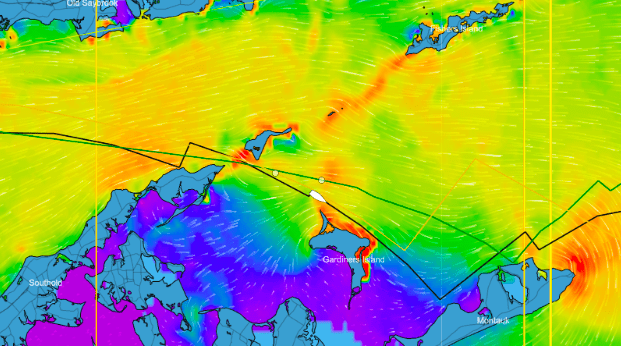Tidal currents are the horizontal movement of water caused by the rise and fall of tides, and they are the result of gravitational forces primarily exerted by the moon on Earth’s oceans. As the Earth rotates, the gravitational force from the moon results in the formation of a water bulge on the side of the Earth facing the moon. Simultaneously, a second bulge is created on the opposite side, generated by the centrifugal force produced during the rotation of the Earth-moon system.
As a consequence of this gravitational interaction, water moves in the form of currents. When the tide is rising, water moves towards the shore, creating a flood current. By contrast, water moves away from the shore during the falling tide, forming an ebb current. This cyclic variation in water level affects the generation of tidal currents, and the strength and direction of tidal currents vary depending on the geographical features of the coastline, underwater topography, and local conditions. They are particularly significant in coastal areas, estuaries, and narrow straits, which can directly impact maritime navigation.
Understanding tidal currents is crucial for sailors to plan safe and efficient journeys since these currents can impact vessel speed, maneuverability, and overall navigation. However, although tidal currents significantly impact maritime activities, their intricacies are often overlooked. Sailing with a current can be akin to riding on a magic carpet, boosting your vessel’s speed and pushing you through the water. Exploiting this free energy can even reduce the length of a passage. But getting it wrong can impede your journey, sometimes with dangerous consequences.
Historically, high-resolution tidal current modeling was a rarity. However, PredictWind, in collaboration with a team of expert oceanographers, has revolutionized tidal current modeling, covering 90% of the world’s coastlines with their comprehensive tidal current maps.
PredictCurrent’s modeling transcends conventional tide tables by providing a visual representation of current movement, highlighting flow dynamics, strength variations, eddies, and tide reversal points. Sailors can now make informed decisions based on these detailed maps, reducing the risk of adverse outcomes.
The development of PredictCurrent has spanned two years in the pursuit of achieving ultra-high resolution detailing in certain areas and slightly lower resolution where currents are less pronounced. Operating at a resolution as fine as 100 meters, leveraging bathymetric data down to 30 meters, PredictWind employs formidable computing power to deliver its globally consistent tidal current maps. The process mirrors the frequency of PredictWind’s high-resolution forecast models, which run twice daily on a global scale. The integration of Mercator ocean currents with PredictCurrents further enhances accuracy, providing a one-stop solution for navigational planning.
High-resolution current modeling offers valuable insights for cruisers, racers, and powerboaters alike. In yacht racing, the emphasis lies on leveraging the strongest currents in the preferred direction or seeking tidal relief when faced with adverse conditions. Seasoned sailors are well-versed in strategically navigating coastlines to exploit tidal relief during races. Strategic planning and precise positioning in such scenarios can significantly enhance the likelihood of making winning moves during a race.
For cruisers, strategically planning a departure involves timing it to coincide with advantageous tidal currents. Furthermore, careful consideration is given to potential wind-against-tide situations, particularly when facing wind speeds exceeding 12 knots, as these conditions can lead to uncomfortable sea states. Similar considerations apply to powerboat routing.
PredictWind’s Tidal Current Modeling has been seamlessly integrated into its Weather Routing and Departure Planning tools. Powered by sophisticated algorithms, these tools utilize individual boat parameters to automatically calculate the fastest and safest routes, incorporating tidal currents and issuing warnings for adverse conditions. Extreme weather alerts within the PredictWind system now include warnings about hazardous wind-against-current scenarios, providing crucial information for safe navigation.
PredictWind’s PredictCurrent technology is revolutionizing the marine industry, providing the world’s most advanced current modeling. This innovative tool empowers sailors, boaters, and marine enthusiasts by offering a comprehensive understanding of tidal currents. With unparalleled accuracy and safety, users can navigate the seas confidently, marking a significant advancement in maritime technology.
Spencer Hulse is the Editorial Director at Grit Daily. He is responsible for overseeing other editors and writers, day-to-day operations, and covering breaking news.
Credit: Source link


Comments are closed.